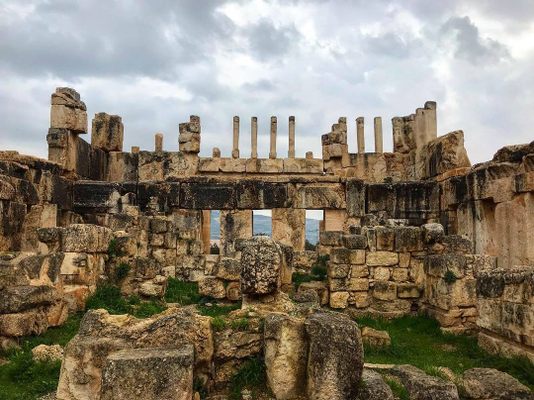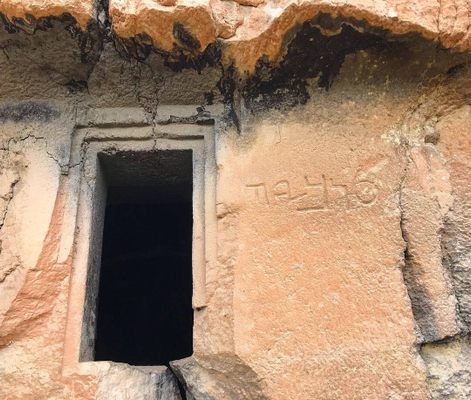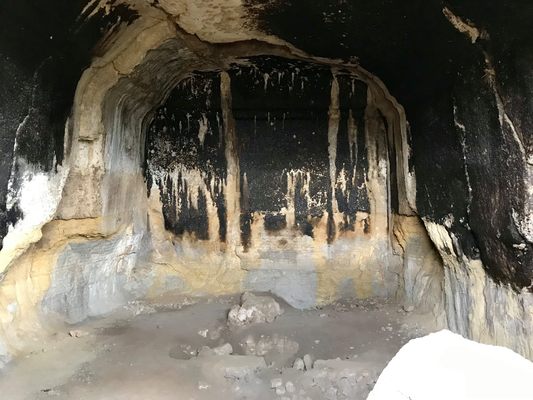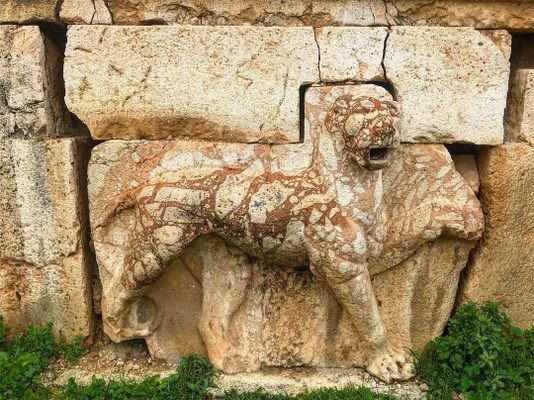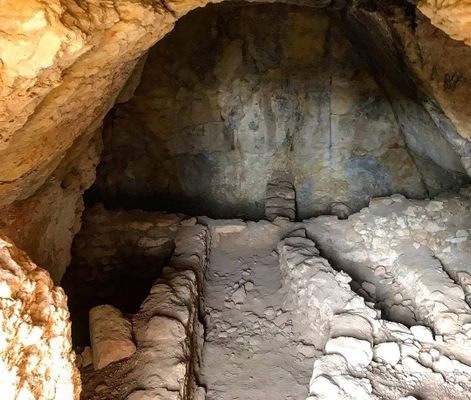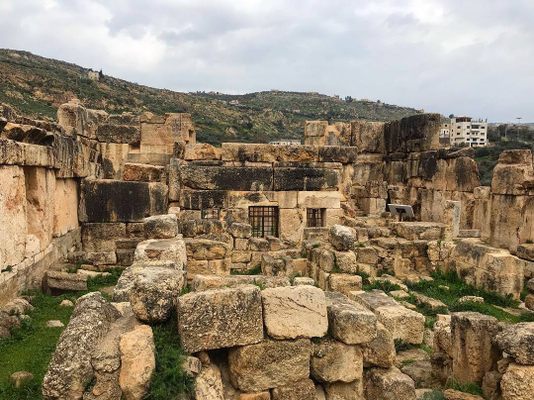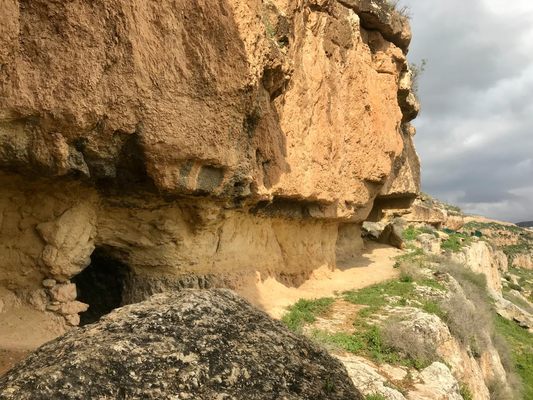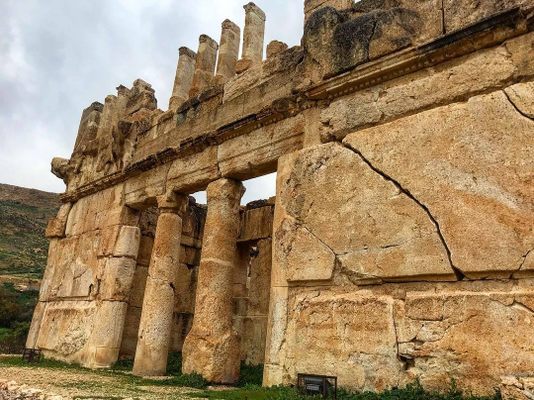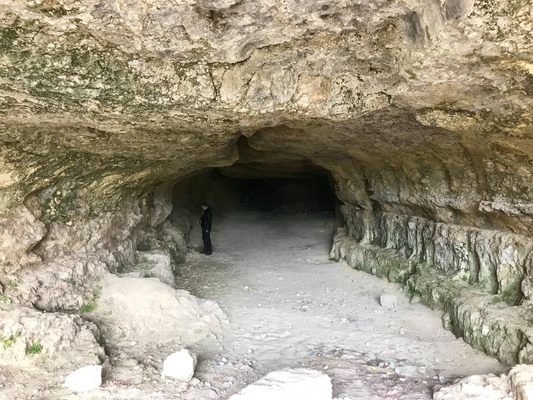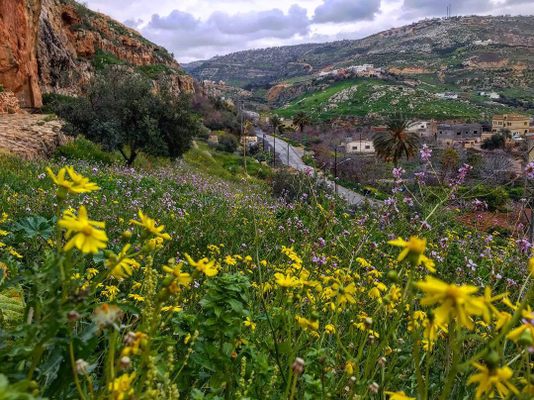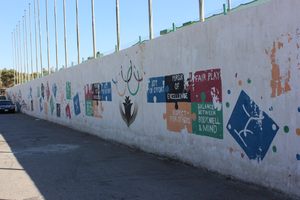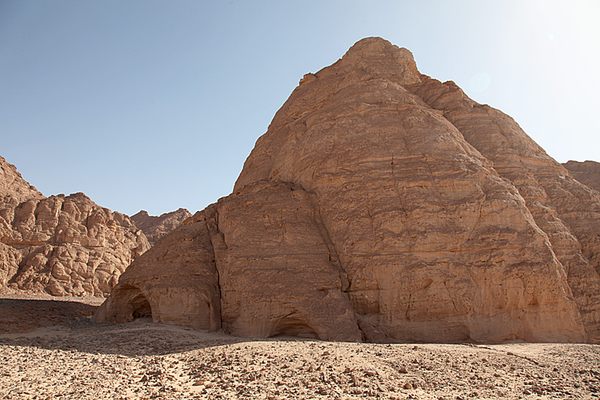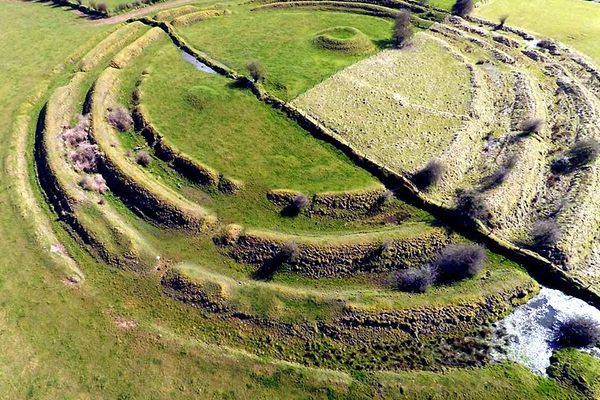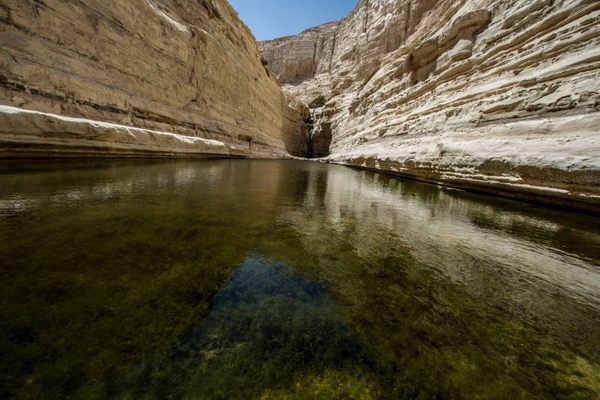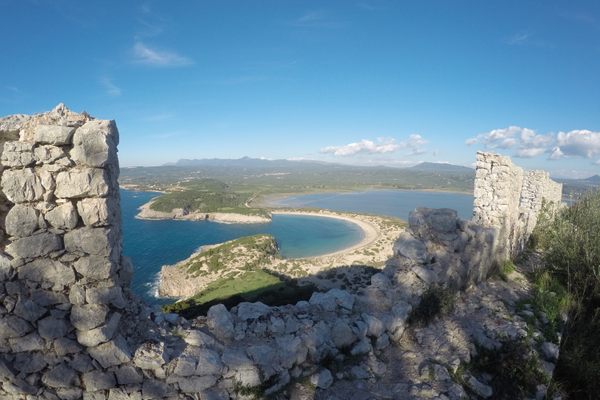About
Nestled among hills just outside of Amman in Wadi Al-Seer is a quaint village filled with ancient stone secrets. Iraq al-Amir, which means “Caves of the Prince” in Arabic, is home to more than 10 caves that have been inhabited by various groups since the Copper Age, as well as the ruins of an Ozymandian castle.
One of these caves is lined with what appears to be seats, fit for a feast or a meeting; another has a more sepulchral appearance, divided by low stone walls into cubicles approximately the length of a supine adult; still another has a high ceiling over what appears to be carved walls, enclosing a spacious room that could have housed several families. While nobody permanently inhabits these caves anymore, shepherds do occasionally keep sheep or donkeys in them. These dark caverns are also home to numerous bats.
Perhaps the most striking aspect of these caves is the large carved words adorning the entrances to two of the caves. Written in an early Hebrew script (some argue that it is Aramaic, but it is likely just an early, non-standardized Hebrew script) are blocky letters that spell “Toviyah.” This is a Hebrew name that translates to “God is good” (tov=good, yah=God). Many scholars postulate that this is a reference to the powerful Tobiad family, an Ammonite Jewish dynasty.
Additional evidence supporting this theory lies just a short walk down the hill from these caves. Nearby Qasr al-‘Abed (“Palace of the Slave” in Arabic) was built by Hyrcanus, the governor of Ammon in the 2nd century BCE. Some people speculate that “slave” refers to Hyrcanus's role in public service, which rendered him a “slave to the people.” Others believe that it references his subservience to the king; after all, during that time, what is now Jordan was caught in the power struggle between the Seleucids and Ptolemies.
In any case, there are some facts about this leader and the castle that have been established with relative certainty. Hyracanus was the head of the Tobiad family, whose existence—as well as a description of this castle and the surrounding caves—is recounted in the writing of the 1st-century historian Flavius Josephus’s book Antiquities of the Jews. The book describes a large white castle into which “animals of a prodigious magnitude” were carved. It also notes that at one point, the castle was surrounded by canals of water. While traces of the ancient moat are no longer visible to the amateur eye, any visitor to Qasr al-‘Abed can see that the structure is indeed decorated with carvings of lions. Though worn smooth by years of rain and wind, they still stand out prominently from the rest of the castle wall.
Although the fortress was quite severely damaged in the earthquake of 362, it was restored by the 1990s. Surrounded by verdant hills and wildflowers, it’s a popular day trip for locals, who, in late spring and during the summer, often have barbecues nearby.
Related Tags
Know Before You Go
Entrance to the caves is free. In theory, you need just a few dinars to enter the castle, but this entrance fee isn't always enforced. Just above the caves is a lush hill filled with Jordanian wildflowers. The view it provides is well worth the small hike.
Ancient Ruins & Legendary Landmarks of Jordan
Explore Mesmerizing Jordan: From Petra to Greco-Roman Ruins.
Book NowCommunity Contributors
Added By
Published
February 21, 2019
